"A striker is defined by his goals." Every football fan has probably heard this statement, which is thought to be an eternal truth. Indeed, perhaps the most important measure of the Nines’ performance is the number of times they score. However, in modern football today, there is a much more complex task for all the players on the pitch. It’s the same for strikers, the role of a modern day top centre forward goes beyond waiting his teammates to serve him inside the penalty area and just finishing his chances.
Centre forwards can play a larger or smaller role in various aspects of the game, including defense, the build-up phase, and chance creation, depending on their playing style, physical attributes, technical abilities, and their team’s tactical approach. Of course, scoring goals is their primary responsibility. Based on the data, we at xfb Analytics categorize attackers into 4 different groups based on their role and playing style. We’d like to use four Number Nines from the Premier League as examples to illustrate these striker profiles.
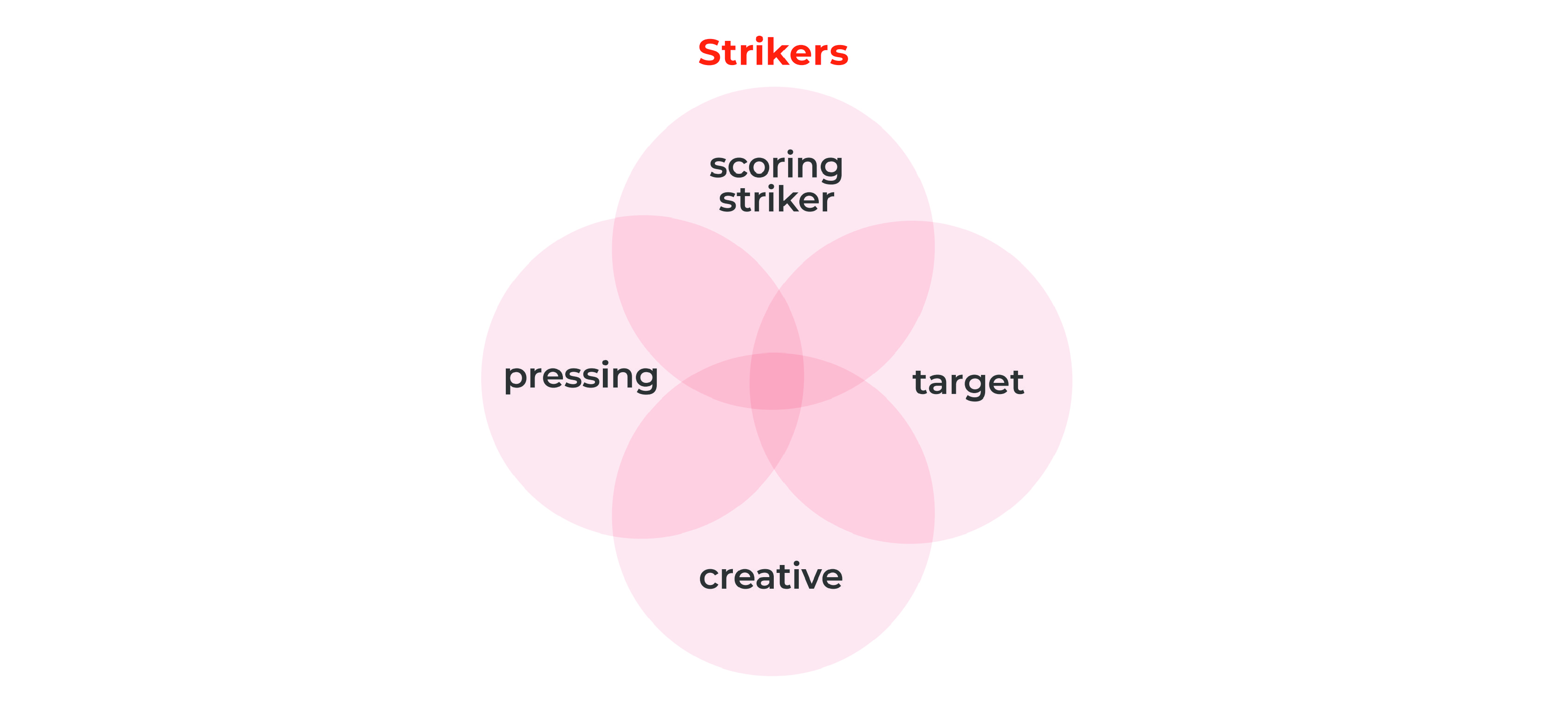
SCORING STRIKER – ERLING HAALAND

Scoring Striker type players are best suited to the phrase at the beginning of this article, and Erling Haaland is undoubtedly fits into that category. The 194 cm tall, Norwegian-born goal scorer puts all of his focus into scoring goals. He had 36 goals in 35 games this PL season and his 1.08 goals per 90 minutes speaks for itself. He rarely goes away from the opponents goal, plays with relatively few touches and is less involved in the build-up phases and chance creation, but finishing is his main role.
The visualisations below perfectly illustrate Haaland’s (and the typical Scoring Strikers’) characteristics: he is less involved in ball possession and build-up play, carries the ball less often and dribbles relatively few. On the other hand, he wins a good percentage of his attacking duels (Manchester City’s centre forward has really good physical abilities), but the most outstanding aspect of his game is clearly his finishing.

During his team’s attacks, he is almost always positioned close to the goal, inside the opponent’s penalty area, waiting to finish the action. The heatmap below, which shows where the Norwegian is most often found with the ball by his teammates in the opponent’s half.
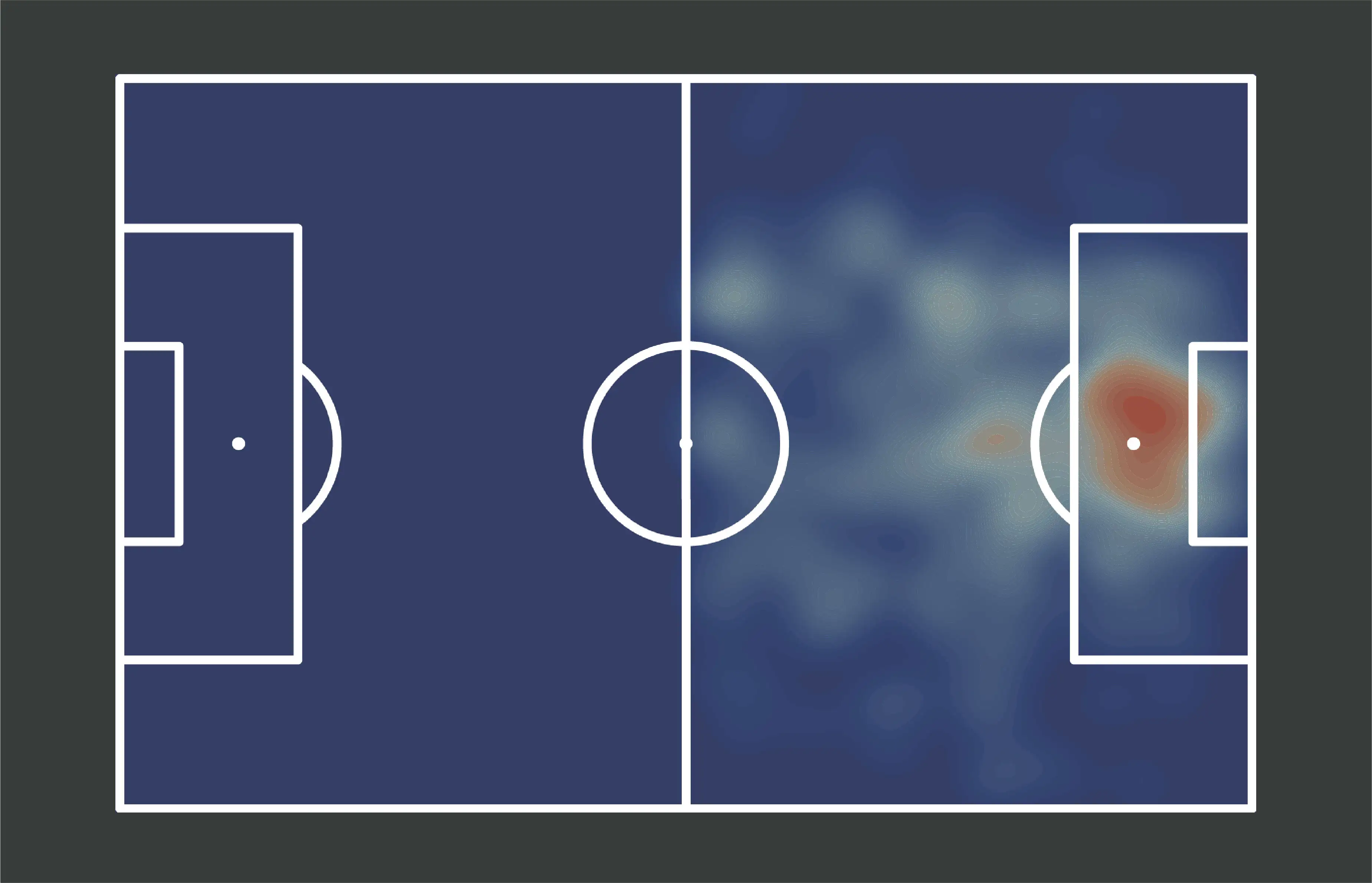
With all this in mind, it is not at all surprising that the vast majority of his attempts and goals come from inside the penalty area. Thanks to his excellent positioning and sense of rhythm, his teammates can often find him in the box with crosses, with smart cut-backs as he attacks the ball very well and takes his chances ruthlessly in front of the goal.
The striker, who won the scoring chart by a large margin, is also among the league’s elite in terms of touches inside the box (5.83 per game on average). He averaged almost 3.39 shots per 90 minutes, more than half of his attempts hit the target. Although his goals seem consistent in terms of territorial distribution, the left-footed centre forward has scored multiple times with his head (7 times) and his weaker foot (also 6 times) this season, converted 7 penalties into goal and has 8 assists as well.
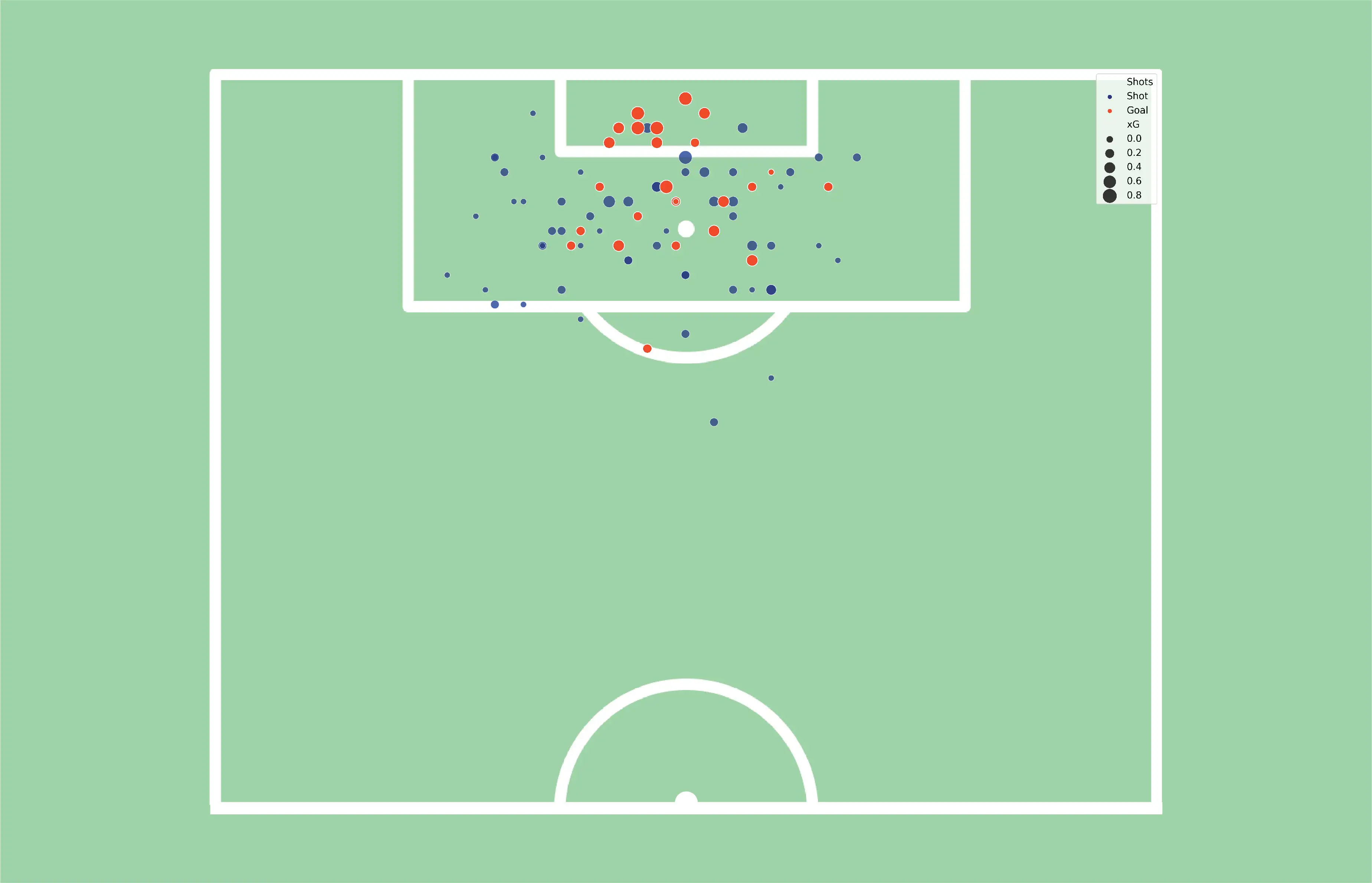
Although defensive performance is less important for a player of this type, Haaland does his part in his team’s off-the-ball play with honour. He is frequently used by City in high-pressing situations where he puts intense pressure on the goalkeepers and center backs of the opposition by using his exceptional physical strength and speed. As the visuals on the right shows, both in attack and defence, the opposing team’s penalty area is the real territory of the Norwegian.
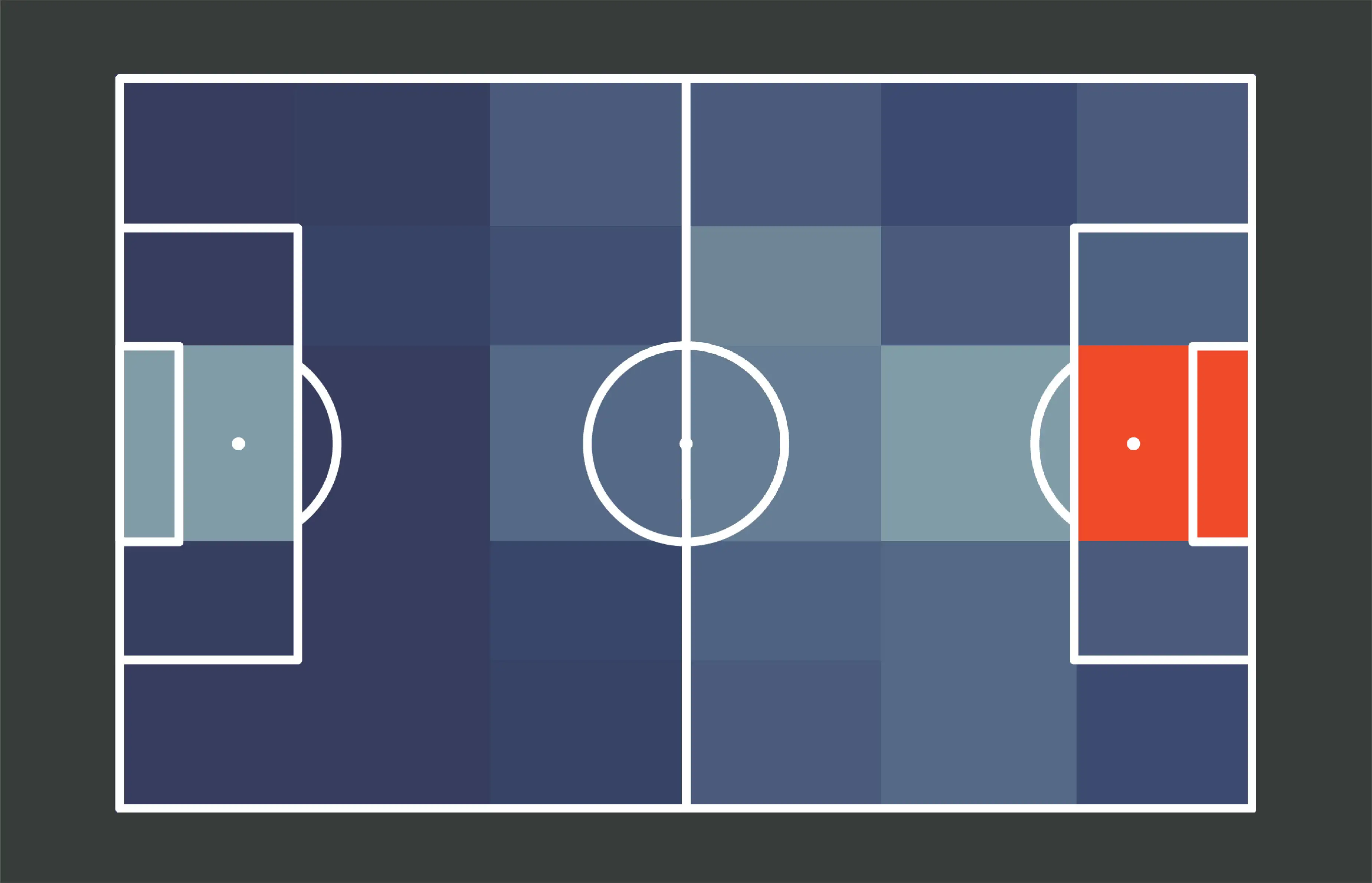
The 22-year-old goal machine really exploded in his first Premier League season. He proves his amazing physical skills and sensational game intelligence every week. He spins off the defenders with an incredible sense, arrives in front of goal with a superb timing and take advantage of his chances relentlessly. He is without a doubt the league’s most dangerous finisher at the moment!
CREATIVE FORWARD – HARRY KANE
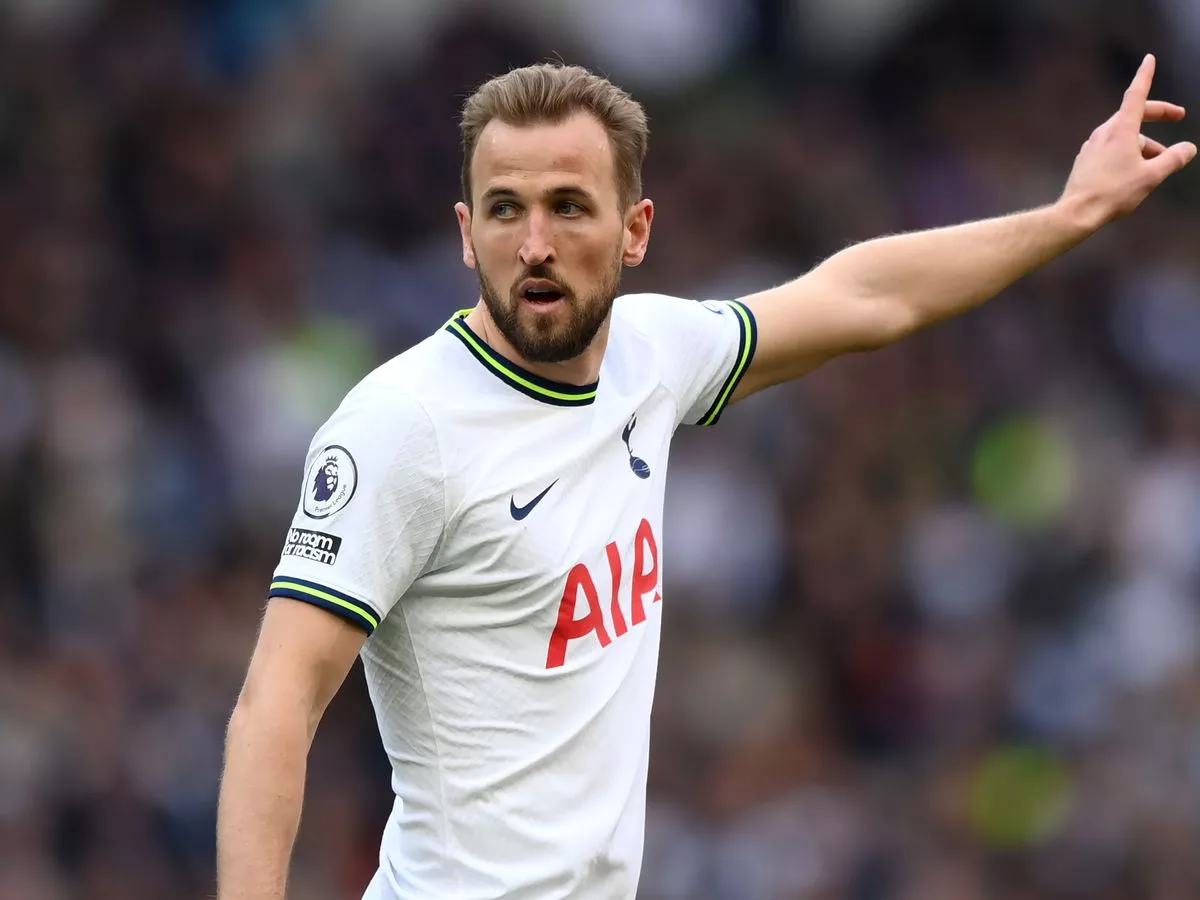
The Creative Forwards have the highest level of playing intelligence and the most exceptional technical abilities of the four different types of strikers. They often move back deep into midfield to support their team in ball possession, build the attacks and create chances.
Tottenham icon Harry Kane is a great example of this: a Number Nine who sometimes acts like a Number Ten and often create chances to his teammates. As you can see in the visualisations below, the Spurs striker actively contributes to his team’s ball possession, often drops back deep to get the ball, creating space for wingers or attacking midfielders running in from deep, and often brings them into play. (Creating indicator).
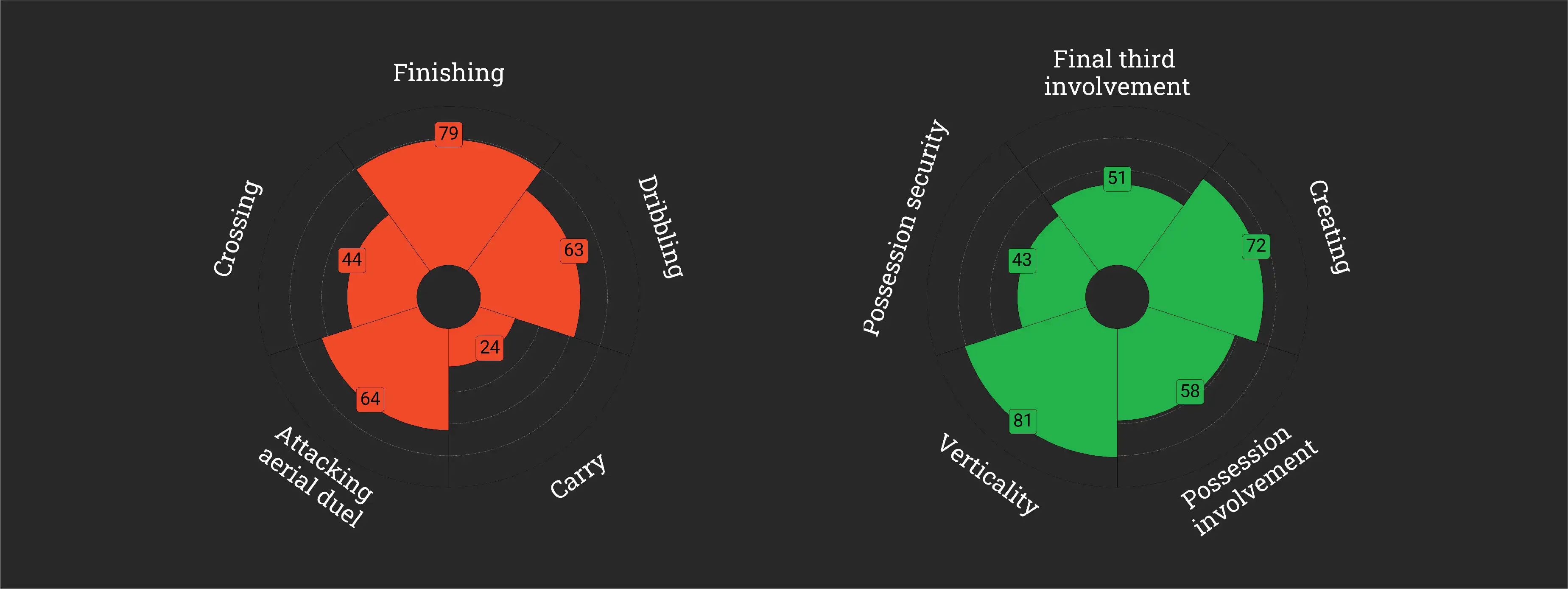
The stats also prove these statements, he is among the league leaders both in key passes and through passes in this Premier League season and the the best among the four strikers mentioned in the article in each of those areas. With more than 84% progressive pass accuracy, he ranks among the tight elite in this category.
The main characteristic of strikers with this profile (as opposed to the Scoring Strikers like Haaland) is that they play in a much larger area when their team builds the attacks, their movement is not only limited to the opponent’s penalty area and the Zone 14, but they also move more in depth and width, creating a numerical advantage in midfield and creating space for penetration and runs from deep.
The heatmap below illustrates the areas where Kane picks up the ball most often in the opponent’s half. You can see how freely the Tottenham striker plays when his team are in possession. He moves in the width of the penalty area and drops back quite a lot to the half-way line to get the ball.

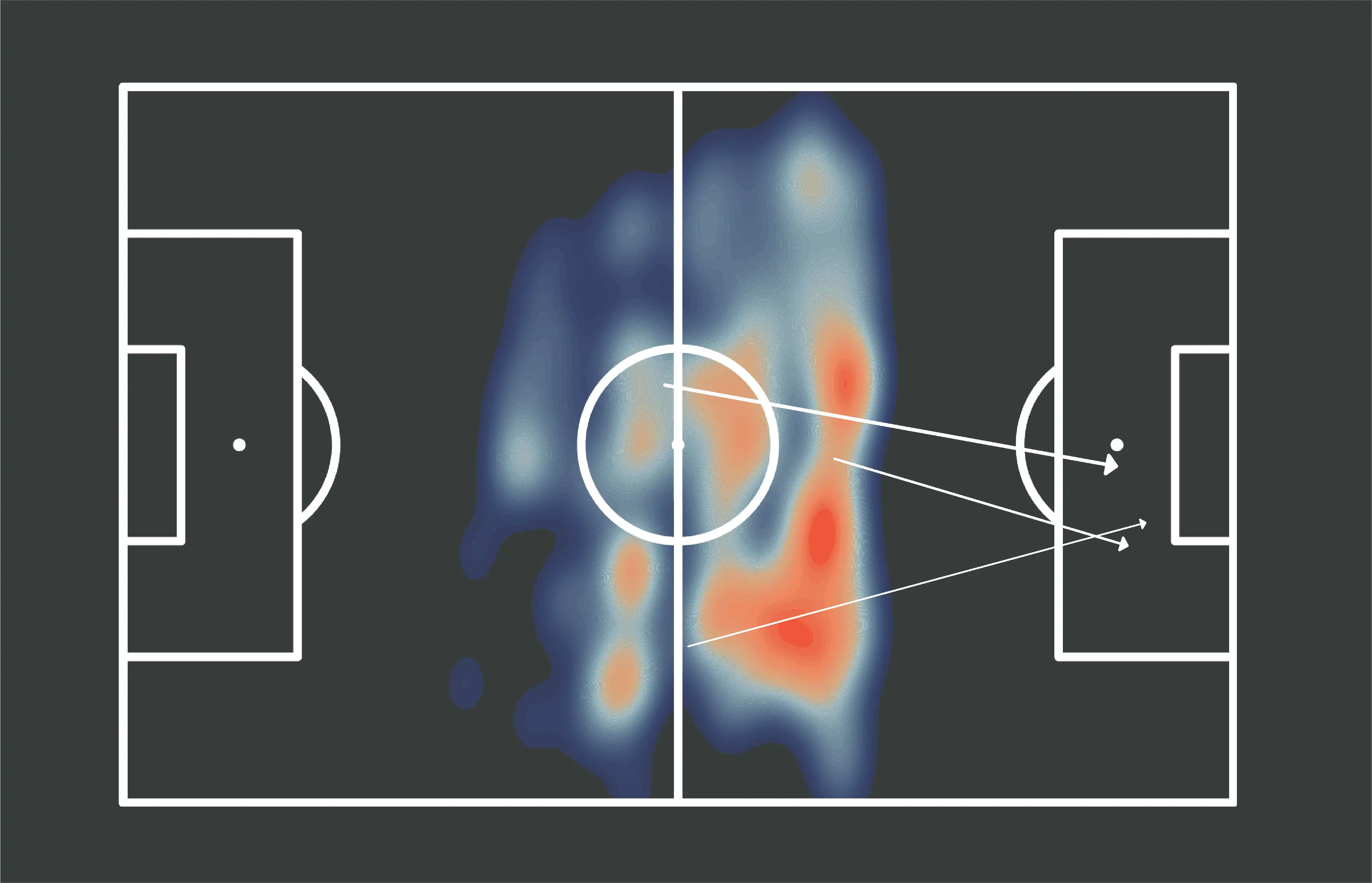
In these situations, when he drops back to the half-way line, or even deeper, he often passes the ball himself into the attacking third to continue building the attack or create chances to his teammates.
But, to go back to the statement at the beginning of this article, the number of times a striker has found the net is ultimately what matters. Harry Kane has been one of the best in this category for years. In this season he scored 30 goals, he mainly endangered the opponent’s net with his right foot (17) and head (11).
His 121 shots this season were the most in the league, he averaged three shots per 90 minutes and 45% of his attempts were on target. He attempted 33 shots from outside the penalty area, the best among centre forwards in this category, only Darwin Nunez and Ivan Toney come close to him in this comparison.
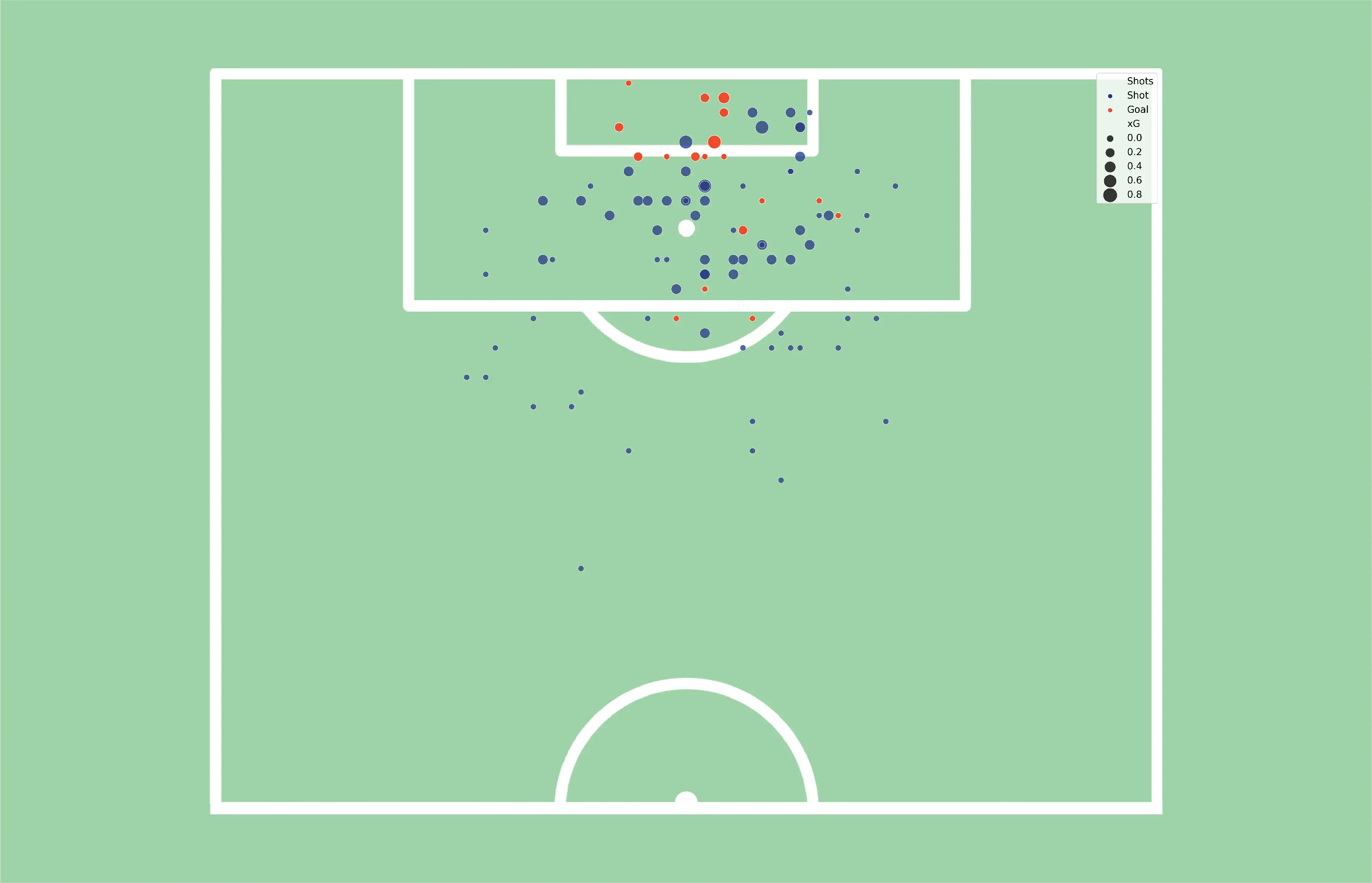
If we compare Kane’s and Erling Haaland’s shot map, we can clearly see how much more long-range attempts Kane had.
Based on the visualisations and data presented in the analysis, Harry Kane can be considered the prototypical Creative Forward. Although he only had 3 assists this campaign (he had 9A+17G last sesason and 14A+23G two seasons ago), he is demonstrating that he plays a significant role in creating opportunities in along with scoring goals. In his 320 appearances in the English top flight, he has been involved in 257 goals (213G+44A), making him the most prolific player in Tottenham’s history. He has a really good chance of surpassing Alan Shearer’s record of 260 goals in the Premier League, which was previously believed to be impossible to achieve.
(Cover photo pictures: www.premierleague.com)



